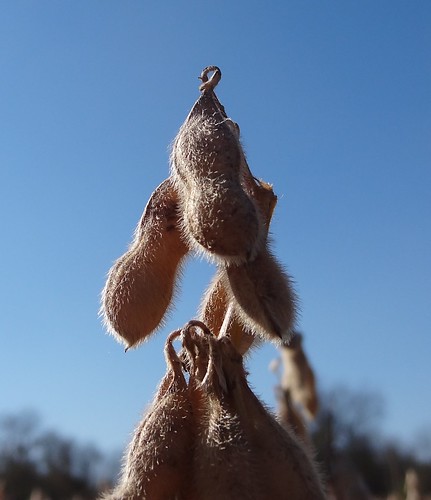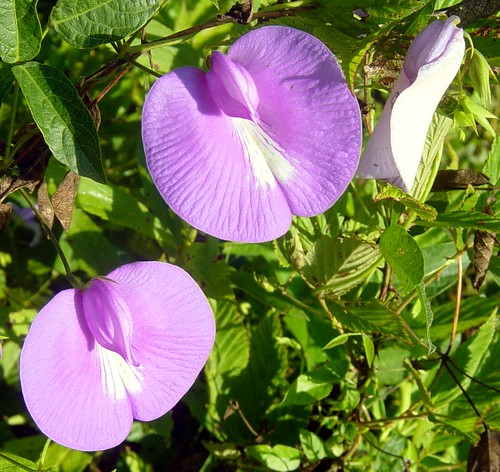
Soybean pods (legumes) against a November sky. Abbeville County, South Carolina.

Purple flower of wild pea plant, Pickens County, South Carolina. (Both photos are links to the originals, in my Flickr photostream.)
The photos above are of just two representatives of the enormous, and enormously important, pea family, also known as legumes, or Fabaceae. Why are they important? Let me count the ways. Rather, let me list just some of the members of this family:
peanuts
soybeans
beans (many kinds)
peas (many kinds)
clover (many kinds)
alfalfa
carob
licorice
Peanuts and soybeans are important crops. According to this source, we exported $16 billion worth of soybeans and soybean products in a recent year. See here for the Wikipedia article section on soybean use. Uses include oil, tofu, edamame, and many other food uses. Peanuts are also noted for having many uses, including, of course, peanut butter. See here for the Wikipedia reference. Beans and peas, of many kinds, are eaten in many ways. Alfalfa and clover are important cattle food. Clover is used as an ornamental, too.
One reason that the members of this family are so important in human diets is that the family is rich in protein. One reason for that is that the plants have nodules on their roots, where Nitrogen-fixing bacteria live, in a mutually beneficial association with the peas, beans, etc. There is some gaseous Nitrogen in the air, and there is air in the soil, usually. The bacteria take some of this Nitrogen, and change it into amino acids, which are the building blocks of protein. Glycine is one of the amino acids. Glycine is also the scientific name of soybeans. Since we must have protein for almost every biological function -- it's essential for all of our cells -- having a source of protein is critical for human diets, and members of the pea family are good sources of protein. Vegetarians, and people who can't afford to eat meat, generally eat beans and peas and other members of the pea family as protein sources.
It is probable that Daniel and his friends persuaded the Babylonian officials to let them eat members of the pea family, as part of their diet, rather than the meats the rest of the trainees ate. The Prodigal Son was probably feeding carob pods to the pigs. Carob is used to make a chocolate substitute.
I'm thankful to God for the bounty of the pea family! Thanks for reading.


No comments:
Post a Comment